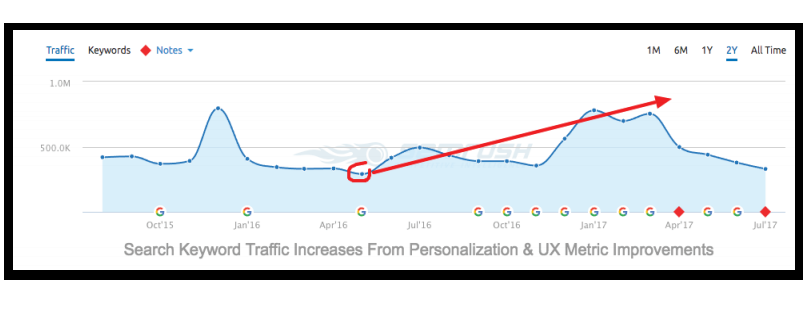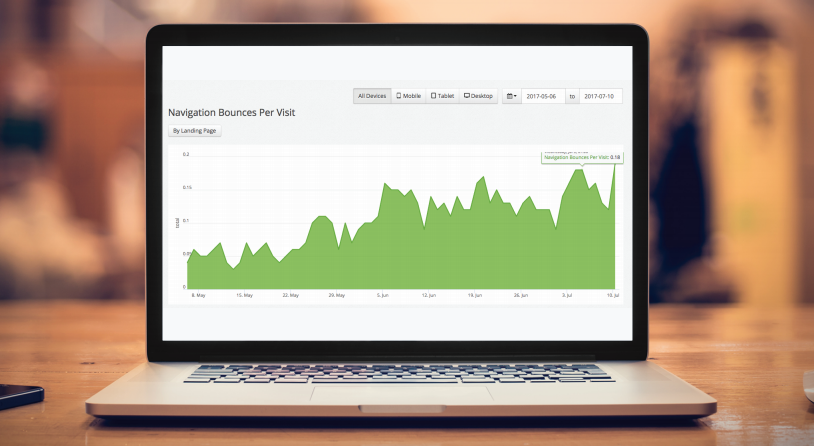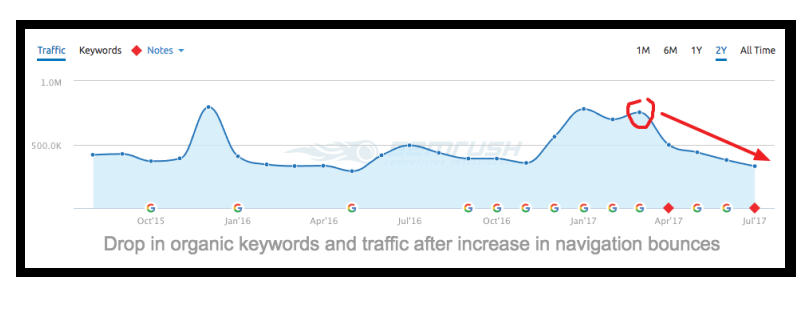Effective methodologies with positive results
About a year ago, this publisher embarked on a concerted effort to extend user sessions on their website to improve user experience and long-term revenue (these elements have been scientifically correlated by recent research). This publisher has started working with its technology partner, Ezoic, to speed up its site and personalize each visitor's experience based on the results of multivariate tests of the site.
UX and revenue improvements
Over one year, multivariate testing and visitor personalization resulted in:
- A 10% increase in page views per session
- A 186% increase in revenue per 1,000 visitors
- A 28% increase in total advertising revenue
The publisher has also seen dramatic improvements in SEO and search engine ranking over this period. The increase in the number of pageviews per visit was also accompanied, in this case, by equivalent improvements in the time spent on the site and the reduction in the bounce rate.

Improved user experience is universally recognized as a factor for many search algorithms - and the results, in this case, seem to reinforce the benefits of these personalization efforts when it comes to organic search positioning.
Ineffective methodologies with negative results
After successfully improving UI and revenue, this publisher wanted to test a new mobile technology provider that offered a well-designed, customized mobile layout for their website. This layout included features presented as ways to help users move on to other articles, such as sliding the cursor right or left or loading another page. There are several technologies on the market, and the publisher chose to experiment with this technology to see how it could potentially affect their site.

False UX and declining revenue
In some ways, the results of using this type of technology on the site looked promising, as pageviews per visit using this technology increased by around 25%. Unfortunately, when the publisher used advanced analytics to dig deeper into the matter, he found that browsing bounces had nearly tripled during that time.
We talk about navigation bounce when a user clicks to visit a new page but immediately returns or leaves that page, which shows that not all pageviews are created equal. In this case, publishers found that up to 74% of visitors had navigation bounces on some of their pages after implementing this technology. The average time spent on the site has also decreased by 50%.

Negative impact of artificial UX inflation
For this publisher, the substantial increase in navigation bounces was directly correlated to:
- a 14% drop in earnings per thousand visitors
- a 23% drop in organic traffic
- a 33% loss of keywords ranked in the top 20
The publisher directly attributed these negative impacts to the artificial generation of additional page views due to the implementation of this new technology. This is because these pageviews with navigation bounces dilute the value of ad impressions over time and can also be a signal to search engines like Google that a potential searcher is unhappy with some part of their experience on a website.
Conclusion
Authentic user experience metrics reflect the actual experience of visitors along their journey. While metrics like time spent on site and pageviews per visit are universally recognized and widely used, they often don't reflect true user engagement.
The successful methodologies used by the first publisher in this study relied on testing and personalization to deliver preferred experiences to each user to extend sessions and increase the number of page views. The failed methodology used by the second publisher relied on technology to automatically prolong user sessions and artificially generate additional pageviews, outside of the user's intention.
Ultimately, the study revealed the importance of authentic user engagement as a mechanism to improve organic search traffic and increase session revenue. Genuine user experiences have been shown to correlate with increased organic traffic and revenue, while technology-driven pageviews and deceptive layouts have resulted in lost keywords and lower ad revenue.
Digital publishers considering these kinds of initiatives for their websites should monitor intent metrics like navigation bounces to ensure the user experiences they create for visitors are authentic and engaging. This will help them ensure the longevity and sustainability of organic traffic and digital revenue.


